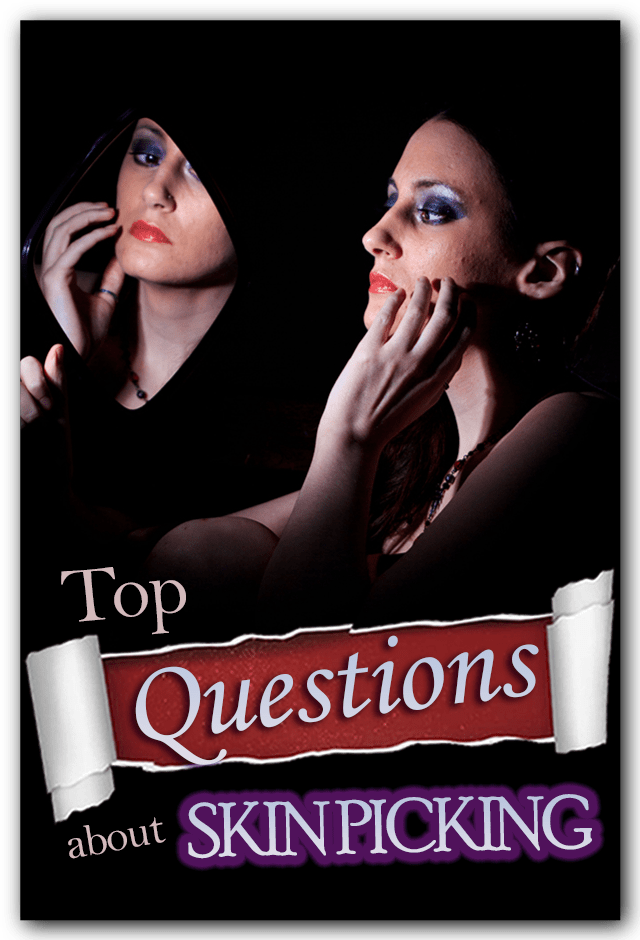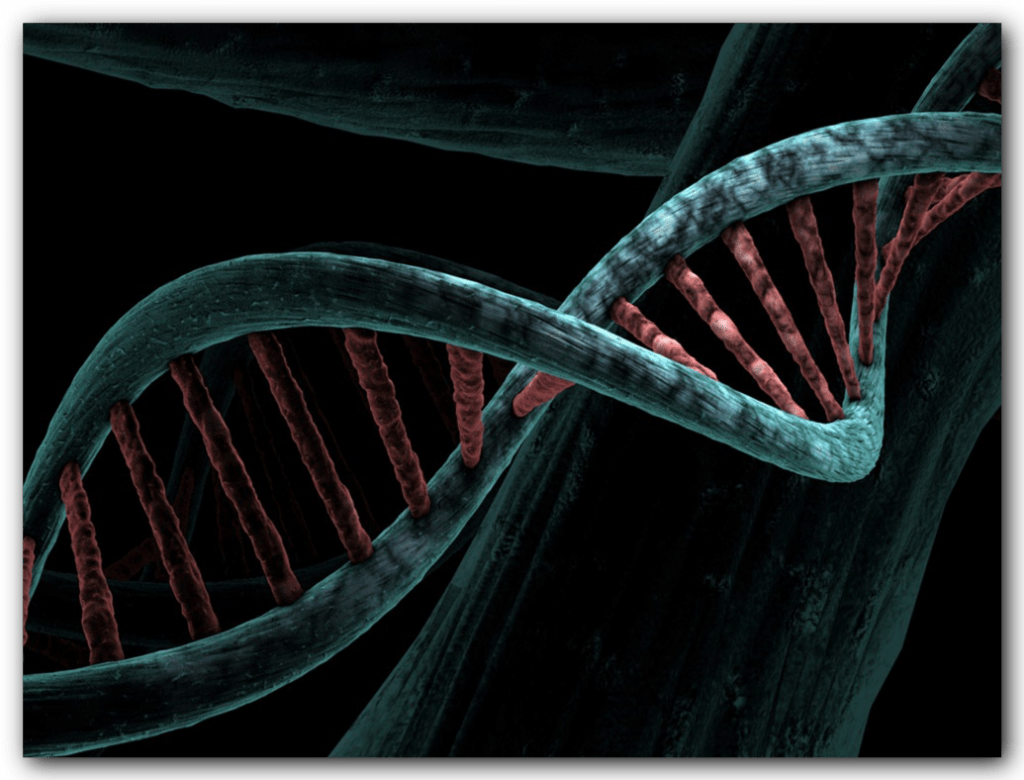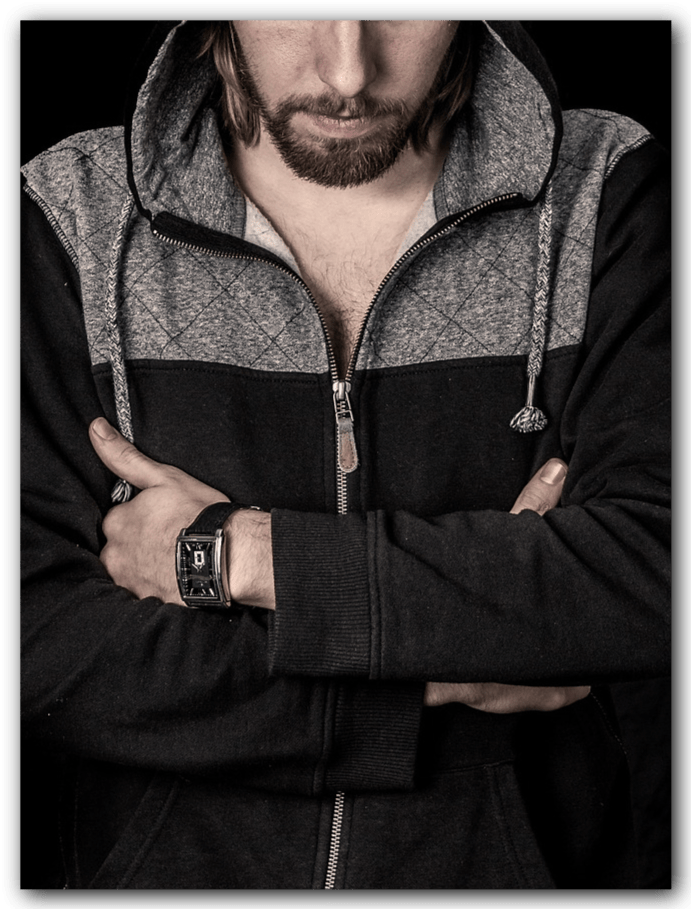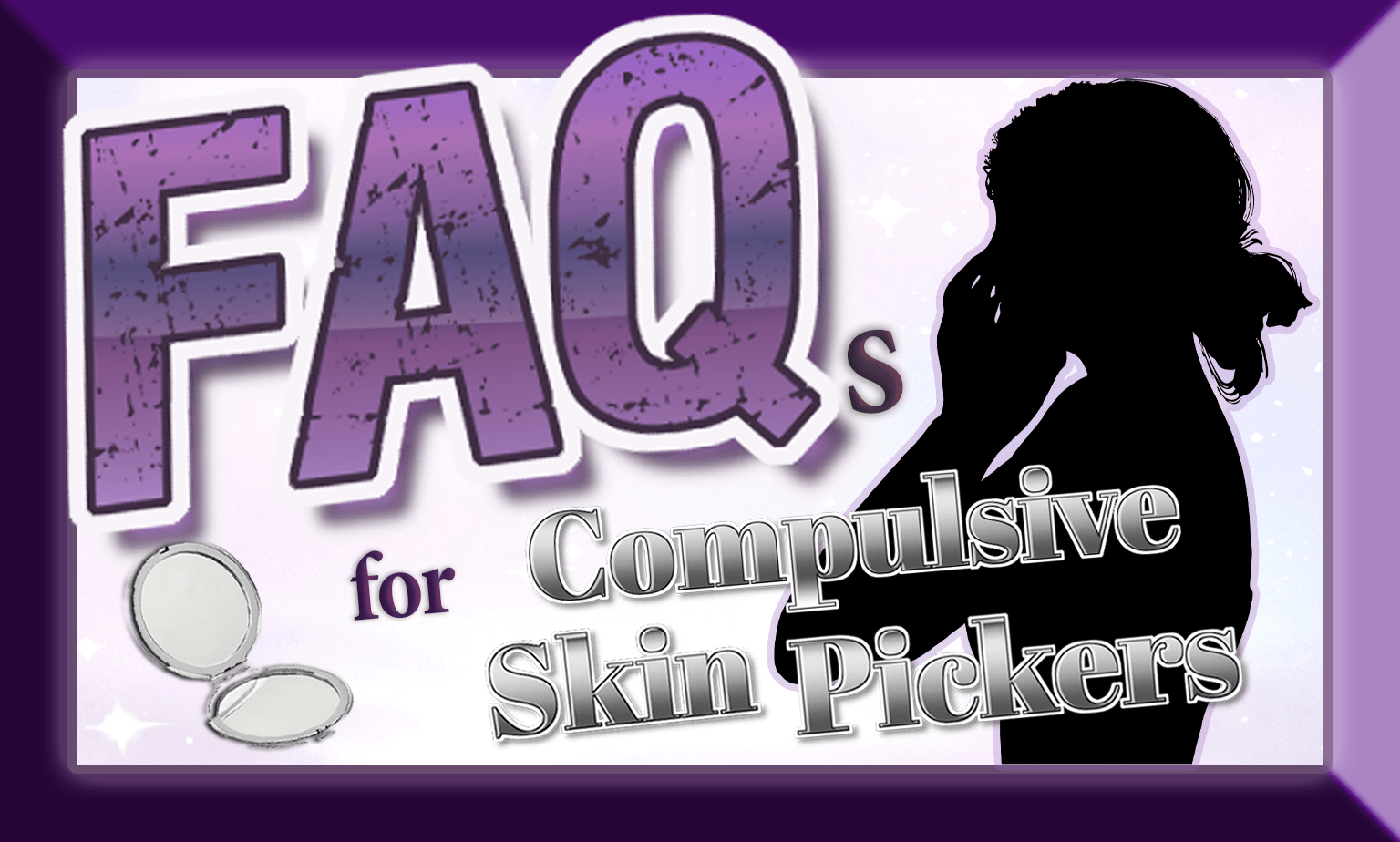Over the years I’ve been asked many questions about excoriation disorder and other Body-Focused Repetitive Behaviors (BFRBs), along with details into my recovery. Here you can find answers to questions I get asked the most, and ones that show up frequently in forums:

Table of Contents
- About Dermatillomania
- Is there a cure for compulsive skin picking?
- Where can I get help?
- What medication is prescribed for excoriation disorder?
- Is skin picking genetic?
- Is dermatillomania a real medical condition?
- How can I find community support?
- What fidget toys are best for skin picking?
- Is skin picking a form of self-harm?
- What can I use to heal my skin quicker?
- Is it normal to eat my scabs?
- Where can I get reliable information to educate my therapist?
- How do I get my spouse to understand?
- For Angela
- How did you stop picking?
- How did you get rid of your scars?
- Do you have any tips to stop picking?
- How do I attend your support group meetings?
- Where can I get your memoir and documentary?
- When is your recovery book with Karen Pickett going to be released?
- How do I get involved with dermatillomania advocacy?
About Dermatillomania
Is there a cure for compulsive skin picking?
Similar to most mental health conditions, there is no cure for excoriation disorder.
Psychotherapy combined with a variety of strategies can help a skin picker learn to manage urges and achieve a state of recovery.
Where can I get help?
The TLC Foundation for BFRBs has a global database of mental health professionals knowledgeable about BFRBs, many who have completed the training course from their Professional Training Institute (PTI) and are listed as graduates.
If you do not live in an area with BFRB specialists or cannot afford treatment, this article highlights 7 Ways You Can Find International Help for your skin picking, hair pulling, or other BFRBs. We do not recommend seeing a “Skin Picking Coach” or “BFRB Coach“, for reasons outlined below.
What medication is prescribed for excoriation disorder?
Selective Serotonin Reuptake Inhibitors (SSRI’s) are the most commonly prescribed, though studies have shown that anti-depressants may aggravate excoriation disorder. Psychiatrists and other qualified healthcare professionals may recommend off-label use of anti-psychotic medication, anticonvulsants, or sleeping aides to treat chronic skin picking.

In 2016, top BFRB researcher Dr. Jon E. Grant published a double-blind study on N-Acetyl Cysteine (NAC) for skin picking, concluding that significant improvements were observed in 12 weeks with those taking NAC versus the placebo group. His 2009 study using NAC for trichotillomania yielded a 56% success rate; with BFRBs being closely linked, research into trichotillomania is beneficial for skin picking. However, these studies are limited to under 100 participants and they only examine the short-term benefits of NAC.
NAC is an amino acid that increases levels of glutathione. It protects against oxidants by recycling vitamin C and vitamin E. In the high doses needed for the off-label pharmacological treatment of excoriation disorder, it is important to increase your intake of vitamin C through diet and supplementation to prevent kidney stones.
Consult a qualified professional before making medication changes or adding supplements to your regimen.

Is skin picking genetic?
With excoriation disorder being a new condition in the most recent Diagnostic Statistical Manual for Mental Health Disorders (DSM-5) edition, more research needs to be done to determine a genetic link in skin picking. Trichotillomania research has discovered a mutated SLITK1 gene among hair pullers in 44 families, while their family members did not have the mutation. However, researchers believe that the gene only accounts for 5% of all trichotillomania cases.
Is dermatillomania a real medical condition?
Excoriation disorder was added to the DSM-5 under the Obsessive-Compulsive and Related Disorders category in May of 2013. In its previous version (DSM-IV), skin picking was listed as an Impulse Control Disorder Not Otherwise Specified (NOS).
The 10th edition of the International Classification of Diseases (ICD) includes excoriation (skin-picking) disorder, using the code F42.4. The current draft for the ICD-11 lists excoriation disorder under Body-Focused Repetitive Behaviour Disorders, a sub-category of obsessive-compulsive or related disorders, using the code F6B25 in the broader Mental, Behavioural or Neurodevelopmental Disorders category.
How can I find community support?
Skin Picking Support offers free monthly, topic-based meetings on Facebook. Learn more about what our support group offers, what to expect when attending, along with guidelines for meetings here. Follow us on Instagram; we follow back BFRB accounts!
Visit these non-profit organizations and grassroots organizations for additional support, many who offer peer support meetings. If online meetings aren’t for you, various social media and independent forums offer environments to talk about your disorder and read about others’ experiences.
What fidget toys are best for skin picking?
With the variety of fidget toys to choose from, it can be hard to figure out which ones are right for you.
While individuals have specific sensory needs and preferences based on which toy works in different situations, my recommended fidgets for skin picking can be found here along with information on where you can try out a variety to find what works best for you.
Is skin picking a form of self-harm?
One of the greatest misconceptions about skin picking is that it is self-harm because it causes physical damage to the skin.
However, the intention behind the behavior is not to cause pain or bodily harm; it’s a compulsive disorder that brings psychological relief. Skin pickers can dissociate from the pain when they’re in a “trance-like state” when they engage in the behavior and are often ashamed of the visible markings left behind.
What can I use to heal my skin quicker?
With so many products promising to heal a scab, it can be difficult to figure out what type of aftercare is best.
Natural products are important in avoiding breakouts caused by perfumes or strong chemicals. Found in many diluted and overpriced products, vitamin e oil alone hydrates skin, reduces redness, and minimizes the appearance of scars.
If you want to heal a wound, clean it with rubbing alcohol (or soap and water) and let dry. Apply an antibiotic ointment, such as Polysporin, to prevent infection. Put a pimple patch or band-aid on it as a barrier to avoid being triggered while it heals.

self-harm
Is it normal to eat my scabs?
Approximately 1 in 4 skin pickers have scab eating disorder, a BFRB aptly named for its description of ingesting scabs or remnants of skin after a picking episode. While it is not formally diagnosed in the DSM, scab eating disorder is believed to share the compulsive trait of BFRBs. Unlike the trichotillomania equivalent of ingesting hair, trichophagia, which can cause life-threatening trichozeboars, scab eating is not physically dangerous but may cause additional shame for those with this disorder.
Where can I get reliable information to educate my therapist?
You can find the most up-to date research and information about excoriation disorder at the TLC Foundation for BFRBs (TLC), based in California, USA. TLC fosters the largest professional network of BFRB specialists, providing a training program for professionals to get trained in the treatment of BFRBs.
Other non-profit organizations who disseminate accurate information about skin picking and other BFRBs are Picking Me Foundation (Chicago, USA), and the Canadian BFRB Support Network (Ontario, Canada).
How do I get my spouse to understand?
Discussing dermatillomania with a romantic partner (or potential) can be extremely challenging out of fear of rejection, shaming, or a simple lack of understanding of this compulsion. Each relationship dynamic is different, but a healthy one is based on trust, communication, and empathy.
It is important to establish boundaries, talk about your feelings, and listen to your partner’s concerns so that both people feel heard. More tips on how to approach this conversation can be found here.
For Angela
How did you stop picking?
Along with other BFRBs, skin picking is a normal grooming behavior most humans do; being pick-free for the rest of your life is an unreasonable expectation. Though there is diagnostic criteria for excoriation disorder, there are no set number of pick spots that determine if you’re routinely engaging in hygienic practices or becoming engulfed in an obsession with your skin, blurring the lines of what recovery means to each person.

December 2015
After appearing on The Doctors with Karen Pickett in 2015, she offered me 12 weeks of therapy- a combination of Cognitive-Behavioral Therapy (CBT) and Acceptance-Commitment Therapy (ACT). For the first week, I kept a skin picking log to observe my patterns and identify triggers. In the second week, I kept an upgraded log and began holding back on urges. Karen introduced ideas to lower my baseline anxiety such as fidget toys, barriers, and breathing exercises.
Learning about ACT in the second half of therapy helped solidify the skills I had just learned and taught me how to cope with uncomfortable feelings. I detail my weekly therapy sessions, homework, questions, and thoughts about the material in our upcoming book:
EMBRACING DERMATILLOMANIA: Through Pain & Recovery
Subscribe here for updates about EMBRACING DERMATILLOMANIA‘s release and follow me on Instagram.
How did you get rid of your scars?
I still have lots of scars, but they are now hypo-pigmented. I let nature take its course in healing instead of searching for products to erase my scars. After fifteen years of severe dermatillomania on my legs, seeing my spots fade to a shade lighter than my natural skin tone after recovery was so invigorating I didn’t care to try products that could potentially expedite healing (and likely trigger me).
Do you have any tips to stop picking?
“Tips and tricks” didn’t help me before therapy; it took a comprehensive treatment program to learn, and build onto, skills and strategies to find my success.
Challenging cognitive distortions was the most eye-opening part of my therapy. To slow down my thoughts enough to learn what each “permission-giving statement” I told myself was before giving into an urge was crucial because it allowed me the opportunity to re-frame them so they could already be in the back of my mind when the next similar urge occurred.
Finding your permission-giving statements is easier if you’re practicing mindfulness techniques daily and logging your picking, which makes you more aware of the statements that gives you permission to pick.
How do I attend your support group meetings?
Become a member of Skin Picking Support on facebook and RSVP to events pinned at the top of the group. Meetings take place one Saturday a month through Facebook, and are hosted through Google Meet with the link provided in the event shortly before it starts.
You can also like Skin Picking Support on Instagram for updates on upcoming meetings along with information about topics we discuss in monthly meetings.
Where can I get your memoir and documentary?
Paperback versions or digital copies of my 2009 memoir, FOREVER MARKED: A Dermatillomania Diary, can be obtained through the various venues listed here.
To learn more about the Scars of Shame, see the trailer, and watch the documentary for free visit the official documentary page.
When is your recovery book with Karen Pickett going to be released?
I want to thank everyone for their patience for the long-awaited release of EMBRACING DERMATILLOMANIA: Through Pain & Recovery. Due to many factors, Karen Pickett and I are hoping to self-publish in 2024 if we are unable to find a publisher or agent by the end of 2023.
How do I get involved with dermatillomania advocacy?
There are many ways to raise awareness with Skin Picking Support! You can check out opportunities through non-profit organizations for BFRBs or venture out to raise awareness on your own through various means:
- Make a video
- Write to a magazine or local news paper
- Blog for a non-profit organization
- Contact radio stations or podcasts
- Start a social media account dedicated to excoriation disorder
- Create an awareness or fundraising campaign
Subscribe here to stay updated about opportunities with Skin Picking Support!
For quick access to important resources, please visit our linktree page.
Follow Skin Picking Support on Instagram and join us on Facebook.
Top PHOTO: ©Darryl Leblanc 2013
Red PHOTO: ©Gillian Drake 2015
MODEL: Angela Hartlin

